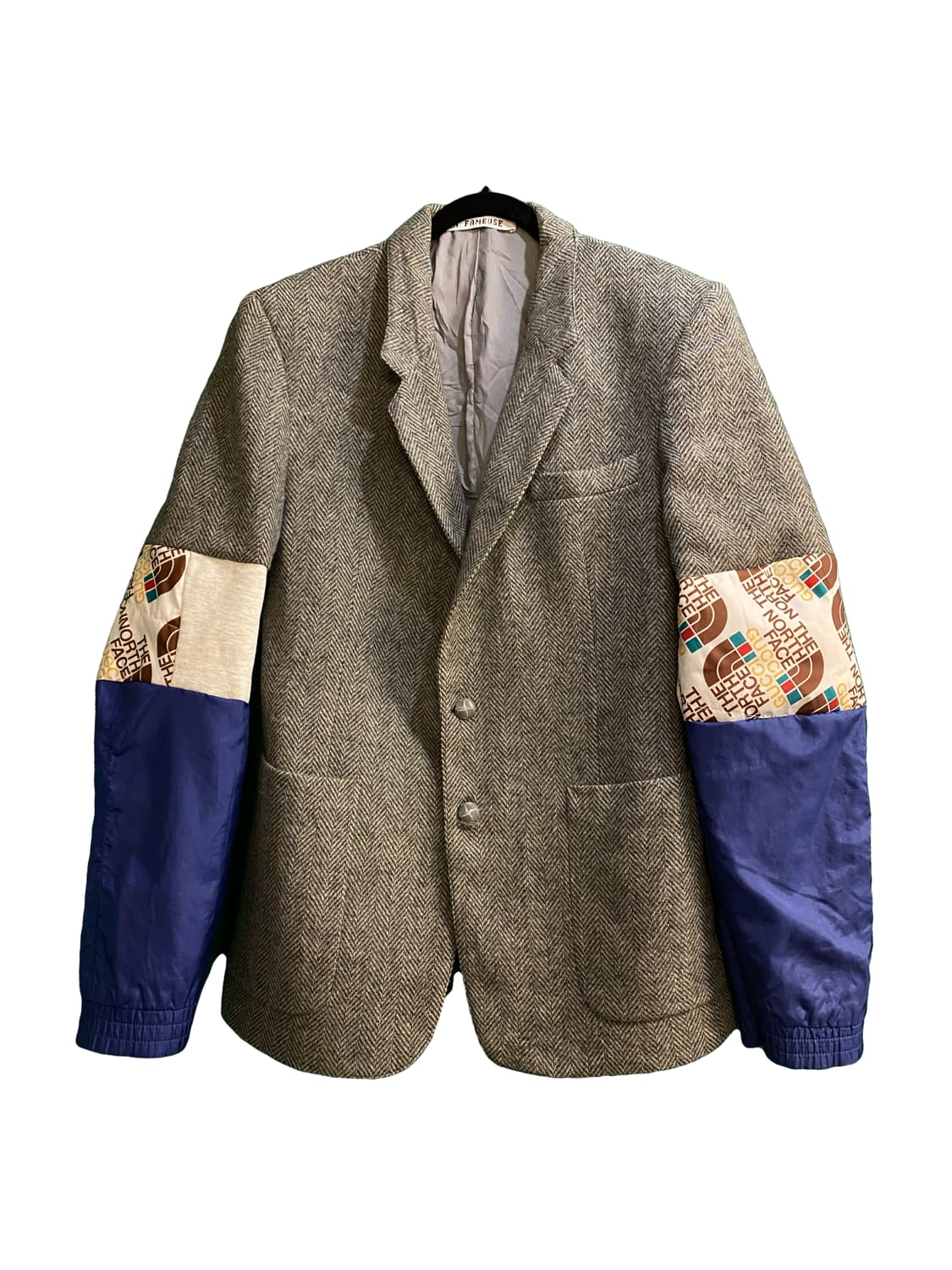Taking two garments and turning them into a single, new piece is a feat of design and a gateway into rethinking branding, trends and individuality - how does your relationship to fashion change when you put on a reconstructed item? Zoom on La Fameuse and Fitolojio’s approach to reconstructed fashion.
RECONSTRUCTED CLOTHES
Reconstructed, reassembled clothes start from a desire to truly mix, merge, blend 2 or more pieces together so that they answer one another and truly create a piece that is not only the sum of its parts but a brand-new, deeply unique item.
The creative process starts at the available materials that become the clothing’s raison d’être, rather than from an idea that then demands the right materials. The beauty of the reconstructed approach lies in the diversity of raw materials that can be used, from vintage clothes found in charities or flea markets, to old quilts and blankets. Even partly damaged clothes can be used as a base so the value of objects is rediscovered (as a simple test, look around you: how many sources of fabric do you see? Notice the beauty of curtains, tablecloths and throws… Do you picture them as clothes?).
"The fundamental art of reconstruction is selecting interesting items and creating unique combinations that add value" - Fitolojio creator, K. Michaloutsou
Starting from what already exists is an efficient way to slow down fashion and create a more ethical industry. The work that goes into each piece takes a more important role: deconstruction, cutting, sewing, fitting requires a handmade process that turns each piece into wearable art. In this sense, even obstacles become potential advantages: unusual or rare fabrics, out of fashion patterns, outdated silhouettes all find a happy ending as part and parcel of a reconstructed piece.
The above vest, made from cast aside quilts, shows how materials become part of the story when they drive the design of pieces.
Let’s make this space vibrant! If this article inspires you or makes you think of similar creators, leave a comment - we want to hear what you have to say!
RECONTSTRUCTED CLOTHES, RECONSTRUCTED FASHION RULES
Upcycling is a disruptive movement, and with every garment transformed, it subverts the traditional codes of fashion.
Do we need branding ?
Traditional clothing puts an emphasis on branding, and consumer habits reflects this, while ‘off-brand’ versions of garments can be the source of much debate, regarding quality, style of the wearer, copyright… With the merging of clothing, while the brands that appear on the newly-assembled garments play a part in a buyer selecting a piece over another, the way the designer joins pieces is at the source of the garment’s appeal - notably how the colours, textures and shapes enter in dialogue with one another.
For example, the jacket below is made with Gucci and The North Face pieces, but the upcycling buyer recognises the fine craft and design of the product too:

A deep dive into the comment section of La Fameuse’s instagram demonstrates this: the community never pinpoints the brands that appear on the products, rather cheering on the concept of the upcycled clothes or the pictures that create the aesthetic of the brand.
Craft and design take centre-stage in a new way that allows these recomposed garments to become luxury pieces in their own right.
The creators of reconstructed clothes participate in creating a space where we can rethink what a product is: if the brands are subverted, am I still making a statement on the brands I like? Is my style changing if I focus on the craftsmanship of a product rather than where it is from? If I know my jacket with a brand on it isn’t actually from the brand, am I tricking anyone? (N.d.A. : spoiler alert: as long as the creators don’t imitate a brand to fool customers, then no).
Trending individually…
The reconstructed process also creates an aesthetic, unmistakably linked to upcycling and very recognisable by an outside gaze. However, individuality remains the watchword with the merging process as every piece is unique, as opposed to what traditional retailers might be able to provide their customers when sharing supply-chains. Notably, the design stage (where brands respond to trends and thus create very similar clothing) and the distribution phase (when materials are sent to many brands) often create sameness, while one designer working for similar brands can also create echoes (N.d.A: sameness can also be wonderful in its own way and generate fantastic imagery as does Hans Eijkelboom).
With reconstructed, upcycled clothes, you can participate in a trend, be recognised by others that do too, while owning unique pieces that you selected.
With reconstructed, upcycled clothes, you can participate in a trend, be recognised by others that do too, while owning unique pieces that you selected. This feeling of individuality is reinforced as the wearer makes a statement about their sustainable values through their clothes.
"The relationship between garment and wearer therefore changes, opening up the dialogue about a more conscious consumption behaviour" - K. Michaloutsou
CLOSING THOUGHTS
Just like that, reconstructed, upcycled clothes change fashion, one creation at a time. As creators keep doing what they do best, the upcycling fashion scene will keep changing the rules - rules that now resonate with more and more consumers.
Share your thoughts! Drop one word that describes how you feel about upcycling fashion… inspired, excited, involved ?